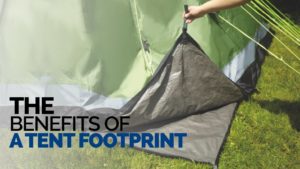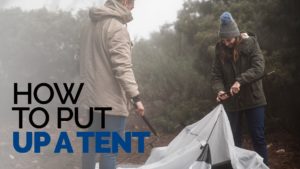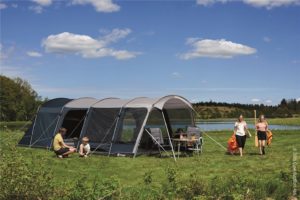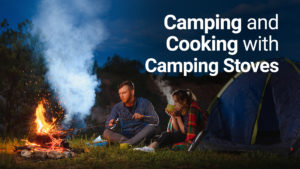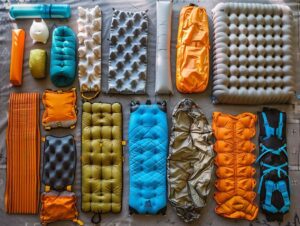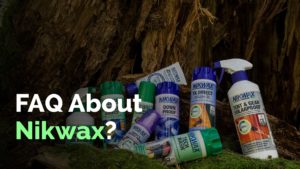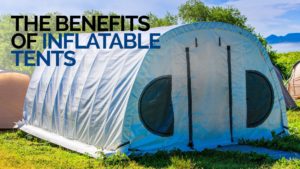
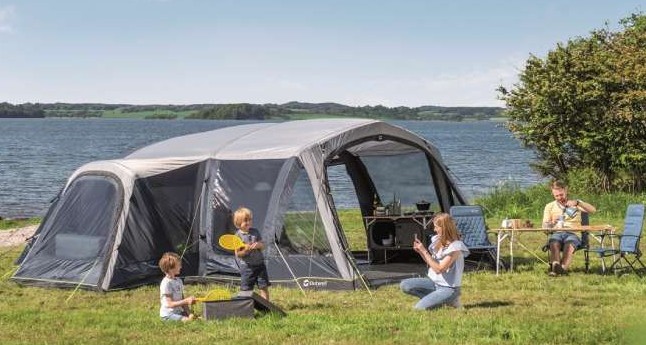
Andy
- Categories: Advice
Embarking on a camping adventure immerses you in the serenity of nature, offering a respite from the hustle and bustle of daily life.
However, the tranquility of a night under the stars can quickly be dampened by the unwelcome phenomenon of tent condensation.
This common issue not only makes for a damp and chilly morning but can also compromise the comfort and durability of your camping gear.
Understanding and managing tent condensation is essential for any camper looking to maintain a dry and comfortable shelter.
Drawing upon expert insights from The Expert Camper, this guide will explore effective strategies to mitigate tent condensation, ensuring your camping experience remains enjoyable and moisture-free.
Choose the Right Campsite / pitch:
The location of your campsite / pitch plays a pivotal role in the battle against tent condensation.
Here are key considerations to keep your tent dry:
Shade Matters: While sunlight can warm your tent during the day, it also increases the temperature difference at night, which can lead to condensation. Pitching your tent in a shaded area under trees can help maintain a more consistent temperature inside and outside your tent, reducing the likelihood of condensation forming.
Distance from Water: Bodies of water like lakes and rivers add beauty to your campsite but also increase the humidity in the surrounding air. This moisture-laden air is a prime contributor to tent condensation. By camping further away from water sources, you can enjoy the scenic views without the added dampness inside your tent.
Elevation Advantage: Cold air tends to settle in low-lying areas, leading to cooler temperatures and increased condensation risk. Choosing a campsite on higher ground can keep you warmer and drier. Elevated sites often benefit from better airflow, which is crucial for reducing moisture inside your tent.
Manage Wet Gear Wisely:
Wet gear is a significant source of moisture that can exacerbate tent condensation. Here’s how to manage it effectively:
External Drying: Resist the temptation to bring wet clothing or gear inside your tent. Instead, utilize external drying solutions such as a tarp or a designated drying area. This approach keeps the internal humidity levels of your tent lower, significantly reducing the risk of condensation.
Strategic Storage: If external drying isn’t an option, store wet gear in waterproof bags to isolate the moisture. While not ideal, this method can help manage humidity levels inside the tent until conditions allow for proper drying.
Ventilation is Key:
Proper ventilation is crucial in preventing tent condensation by allowing moist air to escape and promoting airflow. Here’s how to maximize ventilation:
Utilize Tent Vents: Make full use of your tent’s built-in ventilation features. Open all vents and position them to take advantage of natural airflow. This can be particularly effective during the night when temperature differences increase the risk of condensation.
Door and Window Management: Whenever weather conditions permit, keep the tent doors and windows partially open to facilitate cross-ventilation. This not only reduces condensation but also enhances air quality inside the tent.
Double-Walled Tents: These tents feature an inner and outer layer, creating a buffer zone that helps manage condensation. The space between the layers allows for air circulation, which carries moisture away from the inner tent. When setting up, ensure there’s adequate space between the two layers to promote effective airflow.
Innovative Tent Technologies:
Advancements in tent design have led to innovative solutions that combat condensation effectively. Here are key features to look for:
Tension Ridge Design: Tents like those from Sea to Summit’s Telos and Alto series incorporate a Tension Ridge, an architectural feature that elevates the tent’s highest points, creating more space for air to circulate. This design not only improves ventilation but also enhances the living space within the tent.
Apex Vents and High Doors: Apex vents situated at the tent’s peak, combined with higher and wider doors, facilitate upward airflow, drawing moist air out of the tent. This system is crucial for reducing condensation, especially during cooler nights when the temperature difference between the inside and outside air is more pronounced.
Vertical Walls: Tents with more vertical walls tend to have less fabric contact with occupants and gear, reducing the surface area where condensation can form. This design feature also contributes to a more spacious interior, making your camping experience more comfortable.
Preparation and Packing:
Proper preparation and packing can further mitigate the risk of condensation. Here are essential tips:
Dry Before Packing: Always ensure your tent is dry before packing it away. If conditions don’t allow for drying while camping, unpack and dry your tent as soon as possible once home. This prevents mildew growth and maintains the tent’s material integrity.
Consider a Tent with a Standalone Rainfly: Some tents offer the option to set up the rainfly before the inner tent. This feature is particularly useful during rainy setups, keeping the inner tent dry from the start.
Pack Smart: Include a small, absorbent towel in your camping gear to wipe down any condensation that forms inside your tent. This simple step can keep the interior drier and more comfortable.
Summary:
Tent condensation is a natural occurrence that can dampen the spirits of even the most enthusiastic campers.
However, with the right knowledge, preparation, and equipment, it’s possible to manage and significantly reduce condensation, ensuring a more pleasant camping experience.
From selecting the ideal campsite to leveraging the latest in tent technology, each strategy contributes to a drier, more comfortable shelter.
Remember, the key to combating condensation lies in understanding the conditions that cause it and taking proactive steps to mitigate those factors.
Whether you’re a seasoned camper or new to the outdoor adventure scene, these tips from The Expert Camper provide a solid foundation for managing moisture and maintaining a comfortable campsite.
As we embrace the beauty and tranquility of the great outdoors, let’s also equip ourselves with the knowledge and tools necessary to tackle the challenges that come our way.
By doing so, we ensure that our adventures remain memorable for all the right reasons.
Happy camping, and here’s to many dry, comfortable nights under the stars!
Share:
By submitting your email address, you are agreeing to receive marketing emails from theexpertcamper.co.uk.
We’ll never share your email address and you can unsubscribe at any time. Privacy policy
Related Posts

A Seasonal Guide To Hiking In The Peak District
Are you ready to lace up your hiking boots and explore the stunning landscapes of the Peak District? This seasonal guide will take you through

Hiking Challenges Preparing For Your First Ultrahike
Are you ready to take your hiking adventures to the next level? Ultra-hiking offers a unique combination of physical and mental challenges, breathtaking scenery, and

Ecofriendly Hiking Tips For Sustainable Adventures
Are you an outdoor enthusiast looking to minimise your impact on the environment while enjoying the great outdoors? Eco-friendly hiking is the perfect solution! We
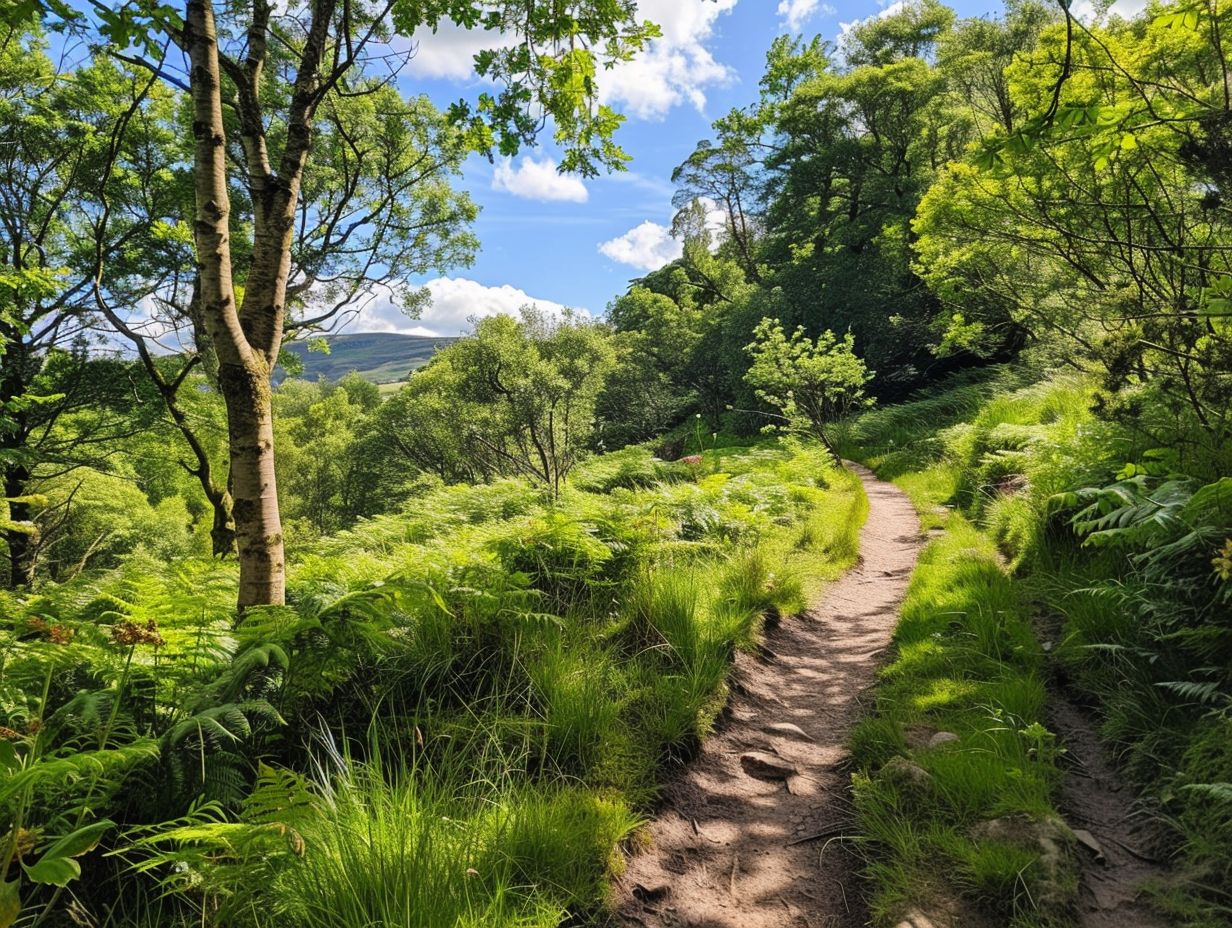
The Best Hiking Trails For Experiencing UK Wildlife
When exploring the picturesque hiking trails of the UK, you can expect to encounter a diverse array of wildlife. From majestic birds soaring overhead to

Wildflower Walks The Best Trails For Nature Lovers
Are you a nature lover looking to embark on a wildflower walk? Explore the best trails for wildflower walks, including [Trail Name 1], [Trail Name


